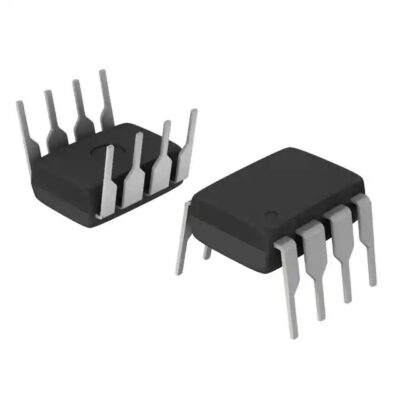TL071CN
Part Number: TL071CN
Manufacturer: STMicroelectronics
Description: IC OPAMP JFET 1 CIRCUIT 8DIP
Shipped from: Shenzhen/HK Warehouse
Stock Available: Check with us
ICRFQ.com - Electronic Components Distributor in China Since 2003

Part Number: TL071CN
Manufacturer: STMicroelectronics
Description: IC OPAMP JFET 1 CIRCUIT 8DIP
Shipped from: Shenzhen/HK Warehouse
Stock Available: Check with us
| Datasheet | |
|---|---|
| Category | Integrated Circuits (ICs) |
| Family | Linear – Amplifiers – Instrumentation, OP Amps, Buffer Amps |
| Manufacturer | STMicroelectronics |
| Series | – |
| Packaging | Tube |
| Part Status | Obsolete |
| Amplifier Type | J-FET |
| Number of Circuits | 1 |
| Output Type | – |
| Slew Rate | 16 V/μs |
| Gain Bandwidth Product | 4MHz |
| -3db Bandwidth | – |
| Current – Input Bias | 20pA |
| Voltage – Input Offset | 3mV |
| Current – Supply | 1.4mA |
| Current – Output / Channel | 40mA |
| Voltage – Supply, Single/Dual (±) | 6 V ~ 36 V, ±3 V ~ 18 V |
| Operating Temperature | 0°C ~ 70°C |
| Mounting Type | Through Hole |
| Package / Case | 8-DIP (0.300″, 7.62mm) |
| Supplier Device Package | 8-DIP |
The TL071CN is a high-speed JFET input operational amplifier that is an important part of many electronic systems. This operational amplifier stands out because it combines high-voltage JFETs and bipolar transistors that work well together into a single integrated circuit. The TL071CN is a very good worker because it has a low input bias, a high slew rate, a high offset current, and a low offset voltage temperature coefficient. Because of these things, it is a great choice for applications that need precision, speed, and low noise.
The TL071CN operational amplifier has several key features and benefits that make it a useful and flexible part for electronic circuits:
The TL071CN’s many useful properties—including its rapid speed, low input bias and offset currents, stable temperature, and low offset voltage temperature coefficient—make it a versatile component with many potential applications. Because of its adaptability, reliability, and precision, it is a crucial component in the design of computer circuits.
The literature says that the TL071CN operational amplifier has the following important electrical properties:
These electrical features make sure that the TL071CN works within the voltage ranges stated and uses a reasonable amount of power. They make it possible for the operational amplifier to work successfully in different circuit setups and voltage supply conditions. It’s important to check the datasheet for the TL071CN’s full list of electrical characteristics, including the minimum and maximum values, so that you can use it correctly and fit it into your plan.
When building an application circuit with the TL071CN operational amplifier, there are a few important things to keep in mind to make sure it works well and that noise and interference are kept to a minimum. Here are some important things to remember:
By keeping these things in mind and following the suggested guidelines, you can use the TL071CN operational amplifier in your application circuit to get the best performance with the least amount of noise and interference.
In conclusion, the TL071CN operational amplifier stands out as a high-performance option that can be used in a wide range of situations. It has a lot of great features, such as high speed operation, low input bias and offset currents, and stable temperature, which make sure that signals are amplified correctly. The fact that it uses both JFETs and bipolar transistors makes it even more reliable.
Explore the data sheet and other application tools to find out how to use the TL071CN to its fullest potential. By using this practical amplifier in your designs, you can make outstanding circuits that meet your exact needs. Don’t be afraid to ask our knowledgeable team at ICRFQ for advice and tips on how to use this amazing gadget to its fullest potential.
WhatsApp us